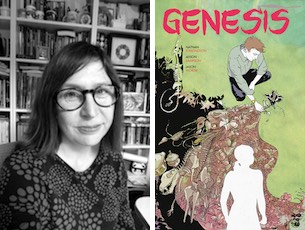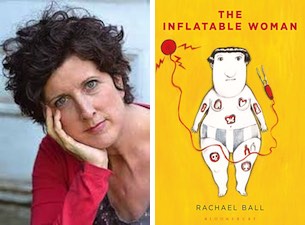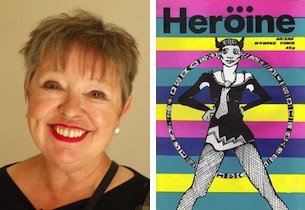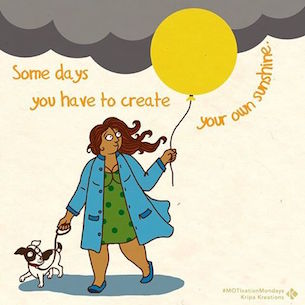The Comix Creatrix exhibition recently concluded in the UK. It was an incredible show, spotlighting the artwork of 100 women comic creators whose work spans two centuries. These creators have been an essential part of comics for as long as there have been comics and the show was a welcome opportunity to explore their art in detail.
Artists on display included Alison Sampson, Audrey Niffenegger, Carla Speed McNeil, Chie Kutsuwada, Emma Vieceli, Julie Doucet, Karrie Fransman, Kate Beaton, Kate Brown, Lizz Lunney, Nina Bunjevac, Rachael House, Suzy Varty, Tarpé Mills, Tove Jansson, Trina Robbins, Tula Lotay, and Una. The catalogue for the show, put together by digital comics app Sequential is free, up now and well worth reading through. This show and the artists it promoted are comics at their purest and best, a collection of some of the finest artists not just in the field, but of all time.
I was able to interview some of the exhibitors, asking each in turn about their start, their careers, who inspires them and that question that drives and defines the creative process: what’s next?
Alison Sampson
 The co-creator of the wonderful and collaborative Think of a City and the artist for Genesis, Alison Sampson’s work combines architectural precision with an incredible understanding of human posture and expression.
The co-creator of the wonderful and collaborative Think of a City and the artist for Genesis, Alison Sampson’s work combines architectural precision with an incredible understanding of human posture and expression.
How did you get started in comics?
I read 2000 AD when I was little and then had a long gap and then one day picked up Watchmen, because there was a film coming out of it. I thought there was something to that and looked to see what else was around. I also like Marvel films—they’re good entertainment.
There’s always a lot of talk in fandom circles about “community.” Is that something you’ve found in comics or is it something you’ve ended up building for yourself?
I love the community in comics. For me it is a series of circles that I’d like to overlap more. I don’t think it is what people think it is—comics can also be tremendously cruel. But I’ve found friends everywhere; many, many people have helped and supported me when they didn’t need to, and I enjoy what we have. And groups like the Valkyries give everyone a boost. I also have worked at building community round our Think of a City project, where we actively bring people in and do matchmaking around an area of mutual interest—design.
There’s a long, ugly history of credential policing in comics when it comes to female creators. Have you encountered that and, if so, how have you worked around it?
What is that? I googled it and just get things about policemen…
There’s an erroneous perception of female-created comics being for women, and I know that’s something this exhibition has worked very hard to address and dispel. Where do you think that belief comes from? And where do you see progress in working past it?
I really don’t know. Speaking for myself I’m not making anything that is aimed at one gender and I don’t think any female creator would want to limit their market in that way. Women really can make any kind of comic, so perhaps this belief comes from there historically being limited well paid opportunities for women to make comics at companies, which have traditionally been perceived to have been selling comics to men first and foremost. In terms of working past it, it is an ongoing process that I think needs work. Education, getting women’s work seen, trying to be as good at the job as possible and explaining to people we are not some kind of monolith, ideally through our work, which is incredibly diverse. It’s a sales job essentially, and also about access to markets, which helps us prove the point. Working with Image Comics, I get access to a really broad market, though comic shops and bookshops worldwide, which doesn’t care if I’m male or female. They want a good story and a book that will sell, and we get to build our own book and bring that to them. There’s lots of progress, where people haven’t been able to meet their market and now are just bypassing the obstacles, and this is just one way.
If there was one comic creator, who wasn’t you, you’d recommend to people, who would it be?
Kevin Huizenga—and I recommend him all the time.
What’s your next project?
I’m drawing Winnebago Graveyard for Image Comics, written by Steve Niles. It is a story of when a family go on a road trip and get stuck in a town full of satanists. It is creator owned and we get to produce the books ourselves, so we can bring in other women as well—in our case Helen Chen, Annie Wu, Katie Skelly, Emi Lenox, Donya Todd, and others. They’ve got the skills and we can use them.
Rachael Ball
 Creator of The Inflatable Woman, Rachael Ball’s other work includes The Trick and an illustrated version of a Weardale Fairies story.
Creator of The Inflatable Woman, Rachael Ball’s other work includes The Trick and an illustrated version of a Weardale Fairies story.
How did you get started in comics?
After I left art college I went to live in Manchester. This was 1987 I think. I had no idea what I was doing at the time. I did some casual jobs and experimented with freelance journalism (got nowhere!), and made a model animation film at an arts studio. Then I saw a cartoon strip competition in Manchester’s listings mag City Life looking for a cartoonist. I think my TV was broken so I entered. Anyway I won, wasn’t paid though for the first 2 years as is the way in the Arts. Also the magazine was run by a collective of ex-students so they probably didn’t have much cash. I sent a collection of the strips to Deadline (cult comic of the 90s), and ended up doing regular strips for them for about 4 years.
There’s always a lot of talk in fandom circles about “community.” Is that something you’ve found in comics or is it something you’ve ended up building for yourself?
Yes definitely. The cartoons community is great, very supportive.
I left cartoons after Deadline, went into illustration and then teaching for a long stretch. My old Deadline buddy Nick Abadzis encouraged and nudged me back into cartooning. I started going to Laydeez do Comics about 4 years ago as a way of getting back in. Wow! That was an eye opener! Fantastic group started by Nicola Streeten and Sarah Lightman. I felt very welcomed and supported. I talked about the progress of my book there on 3 occasions and that really helped it grow. Working in isolation can knock your confidence a little. I’d spent about 8 years working weekends on an illustrated book that I eventually gave up on it as I felt quite unsure as to what I actually thought about my work by this stage. So yes definitely I have found nearly all cartoonists without exception to be very giving individuals. Happy to give advice, share contacts and be supportive. Probably has something to do with their being not much money to be had!
There’s a long, ugly history of credential policing in comics when it comes to female creators. Have you encountered that and, if so, how have you worked around it?
I was one of the very few female cartoonists in Deadline and Deadline could be quite laddy!! There was Julie Hollings before me and Carol Swain appeared in Deadline too. Excuse me if I have forgotten anyone! So although Deadline was very unique and a great showcase of British talent it could have done with championing more female cartoonists than it did. Having said that I was given total free rein by Brett Ewins, Steve Dillon, Si Spencer and Frank Wynne (editors), which was a fantastic experience for me. I could actually earn a meagre but possible living from cartoons at a pretty young age. Also my work has never tended to be mainstream so that may have protected me from misogynistic working practices within the cartoon industry.
There’s an erroneous perception of female created comics being for women, and I know that’s something this exhibition has worked very hard to address and dispel. Where do you think that belief comes from? And where do you see progress in working past it?
I just think its sloppy misogyny. Men have always shouted louder about the superiority of male cartoonists and comics. That was interesting about the Angouleme debacle because several male cartoonists seemed to gain the confidence to express quite reprehensible opinions about the inferiority of female cartoonists. Bollocks obviously! Also much of the male dominated mainstream of comics have probably never looked at female cartoonists work with more than a passing glance so the opinion is ill informed and ignorant.
The emergence of so many interesting female cartoonists in recent years—[and] the strength of female editors to champion female talent and supportive organisations like Laydeez do Comics—can only mean a more and more positive future for female cartoonists.
If there was one comic creator, who wasn’t you, you’d recommend to people, who would it be?
Renee French. Strange, mysterious, beautiful work. I think she has some supernatural powers or something. Her work is amazing!
What’s your next project?
I am currently working on a graphic novel called The Wolf Man. I reckon I will finish it the end of 2017 so it’s a big slog. It’s semi-autobiographical and is based around when my father died when I was 6, but the rest of it is fictional.
I’m also working on a series of short caustic cartoon strips centred on a female teacher and her experiences in and out of school. It’s a bit of light relief. It has a possible working title of “The Patsy Papers!” Well, I like it, anyway!
Suzy Varty
 Suzy Varty is a noted British comics artist, writer, and editor. In the late 1970s, she was a driving force behind Heröine, the first anthology of comics by women to be published in the U.K., compiling, contributing to, and editing the book. She remains active in the British Comics scene, frequently appearing at such conventions as Thought Bubble Comic Arts Festival in Leeds and the Canny Comic Con in Newcastle.
Suzy Varty is a noted British comics artist, writer, and editor. In the late 1970s, she was a driving force behind Heröine, the first anthology of comics by women to be published in the U.K., compiling, contributing to, and editing the book. She remains active in the British Comics scene, frequently appearing at such conventions as Thought Bubble Comic Arts Festival in Leeds and the Canny Comic Con in Newcastle.
How did you get started in comics?
As a child I loved Rupert Bear and The Beano. Rupert annuals had the best stories, and he had an interesting bunch of friends. Rupert, of course, was created by a woman, Mary Tourtel. I also clearly remember having a Superman comic when I was about 3. In the 70s I was part of ArZak, a comics collective based at Birmingham Arts Lab, where I produced the first British women’s comic.
There’s always a lot of talk in fandom circles about “community.” Is that something you’ve found in comics or is it something you’ve ended up building for yourself?
There’s always been a sense of community in the underground comics world, which is where I come from. It’s even better now there are more women cartoonists around.
There’s a long, ugly history of credential policing in comics when it comes to female creators. Have you encountered that and, if so, how have you worked around it?
I feel that women have often been overlooked in the whole of the creative arts, but we are tenacious and creative.
There’s an erroneous perception of female created comics being for women, and I know that’s something this exhibition has worked very hard to address and dispel. Where do you think that belief comes from? And where do you see progress in working past it?
Stories are for people. I don’t think women only address subjects that other women will be interested in any more than men only draw for men.
I do think, though, that there’s nothing stranger than real life, and women are deeply engaged with the detail of life, often exploring this in their stories and imagery.
If there was one comic creator, who wasn’t you, you’d recommend to people, who would it be?
A tough question. Posy Simmonds, Kate Charlesworth, Rob Davis, Ralph Steadman, Nick Newman, Hunt Emerson, Alison Sampson.
What’s your next project?
I’m currently working on the script of a graphic memoir that explores my 1960’s growing up in Newcastle upon Tyne, with all the changes, politics and invention that happened over that decade. It was an exciting time to be alive.
Kripa Joshi
 Kripa Joshi, originally from Nepal, won a Fulbright Scholarship to pursue an MFA in Illustration from the School of Visual Arts in New York. Her work is inspired by the folk art traditions of Nepal and India, especially Miss Moti, the lead character of many of her stories.
Kripa Joshi, originally from Nepal, won a Fulbright Scholarship to pursue an MFA in Illustration from the School of Visual Arts in New York. Her work is inspired by the folk art traditions of Nepal and India, especially Miss Moti, the lead character of many of her stories.
How did you get started in comics?
When I went to study at School of Visual Arts, New York, I saw the scope of comics and graphic novels in the bookstores and there was also a history of comics lessons.
There’s always a lot of talk in fandom circles about “community.” Is that something you’ve found in comics or is it something you’ve ended up building for yourself?
I think there is a comics community which is welcoming because comics people are generally quite open-minded, but you enter it step by step. When I first came to the UK I didn’t know anyone. Going to social gatherings was daunting so I started going to Laydeez do Comics talks where I started to get to know people and that lead to knowing some more people and so on.
If there was one comic creator, who wasn’t you, you’d recommend to people, who would it be?
Amruta Patil, the first woman graphic novelist of India.
What’s your next project?
All my books have been self-published till now. So my next project is to get a Miss Moti book published by a publication house.
Thank you to everyone who talked to me, everyone involved in the show and Alison in particular for helping put me in contact with people. These are some of the best comic creators in the world and their work crackles with energy, wit and creativity. So download the program and click through on the links to discover some of the very best voices in comics.
Top image from the Comix Creatrix guide.
Alasdair Stuart is a freelancer writer, RPG writer and podcaster. He owns Escape Artists, who publish the short fiction podcasts Escape Pod, Pseudopod, Podcastle, Cast of Wonders, and the magazine Mothership Zeta. He blogs enthusiastically about pop culture, cooking and exercise at Alasdairstuart.com, and tweets @AlasdairStuart.









